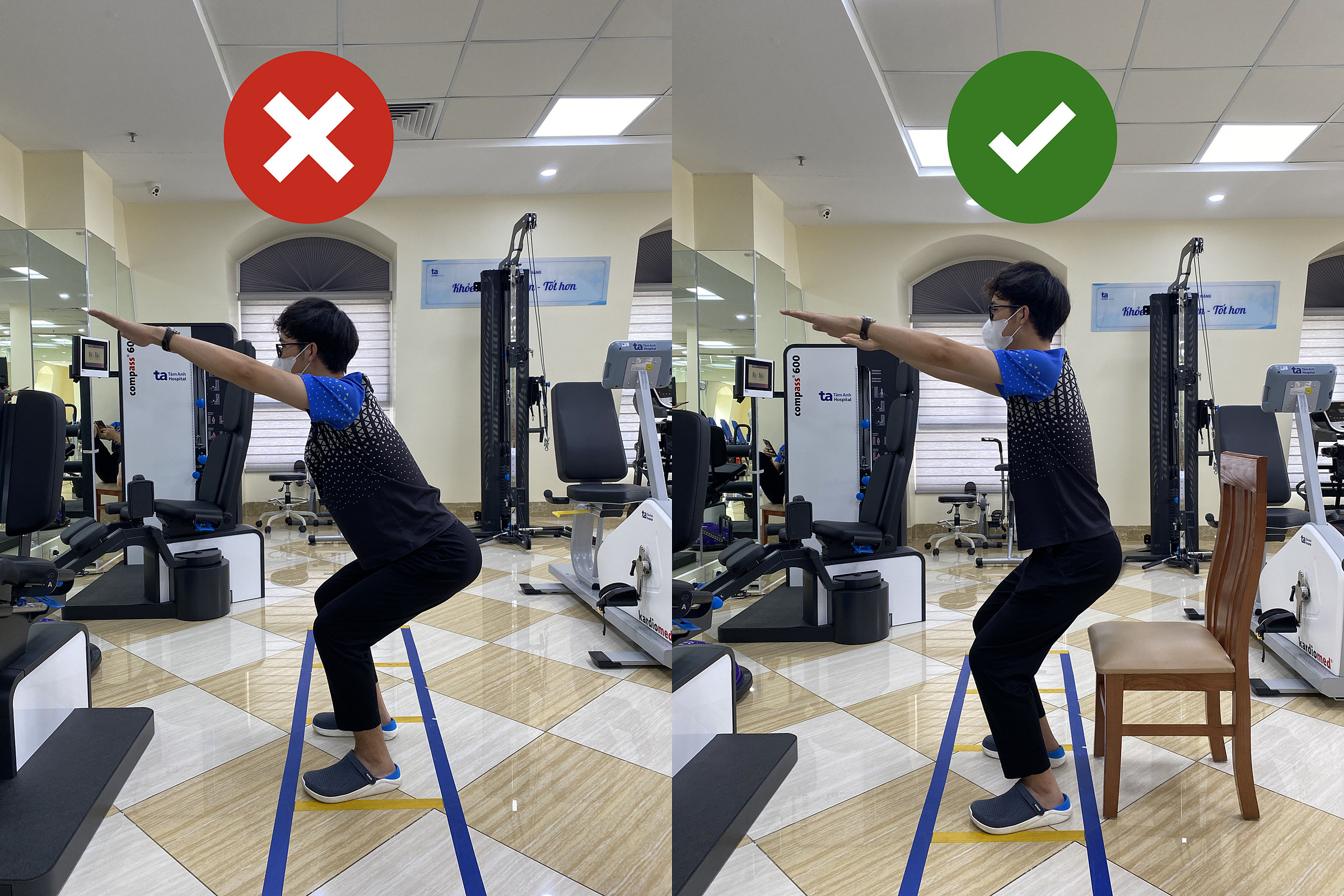A herniated disc occurs when a spinal disc slips out of place, causing the inner gel-like substance to bulge out. Tran Van Dan, head technician of the Rehabilitation Department at Tam Anh General Hospital in Hanoi, advises patients to modify their exercise routines to avoid impacting the affected area of the spine. This can exacerbate the herniated disc, causing increased pain and potential further injury.
Here are some exercises people with a herniated disc should avoid:
Sit-ups
Sit-ups involve lying on the floor with knees bent, pushing the back against the floor to tighten abdominal muscles, and then contracting the abs to lift the shoulders and upper body off the floor.
While sit-ups strengthen surrounding muscles, they put twice as much pressure on the lower back compared to standing. Each sit-up compresses the lumbar discs, potentially pushing them further out of place. This exercise is unsuitable for individuals with herniated discs, especially in the lumbar region.
Deep squats
Squats involve standing with feet shoulder-width apart and lowering the body into a squatting position while maintaining balance. Deeper squats engage the glutes, hamstrings, and quads more intensely.
However, deep squats cause the glutes to contract and pull on the hips, involuntarily arching the lower back. This arched posture is detrimental to the spine, putting pressure on already compromised discs. Dan recommends that if individuals with herniated discs want to squat, they should perform shallow squats while keeping their back straight.
 |
A rehabilitation technician guides a patient with a herniated disc in performing a shallow squat, avoiding deep squats. Photo: Tam Anh General Hospital |
A rehabilitation technician guides a patient with a herniated disc in performing a shallow squat, avoiding deep squats. Photo: Tam Anh General Hospital
Toe touches
This exercise, common in warm-up routines and yoga, involves standing upright and bending down to touch the toes.
This position puts significant strain on the lower back, which supports the weight of the head, neck, chest, and internal organs as the person bends forward. For those with a herniated disc, this exercise intensifies pressure on the lumbar discs, potentially worsening their condition.
Jumping rope
Dan advises against sudden movements like quick standing, sitting, or jumping for individuals with herniated discs. These movements impact the discs and can trigger acute pain. Jumping rope involves repetitive, rapid movements that can accumulate and aggravate a herniated disc.
Twisting
Twisting motions are harmful to those with herniated discs, affecting the spine and causing the discs to slide further. These movements should be avoided as they accelerate disc degeneration and can compress nerves, leading to pain, numbness, and even muscle weakness.
Twisting is common in sports like badminton, tennis, table tennis, and pickleball. Individuals with herniated discs should limit participation in these sports to prevent their condition from worsening.
Thanh Long
| Readers can submit questions about musculoskeletal diseases here for doctors to answer. |












